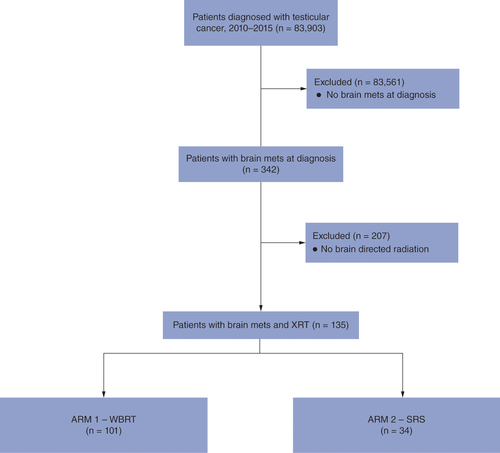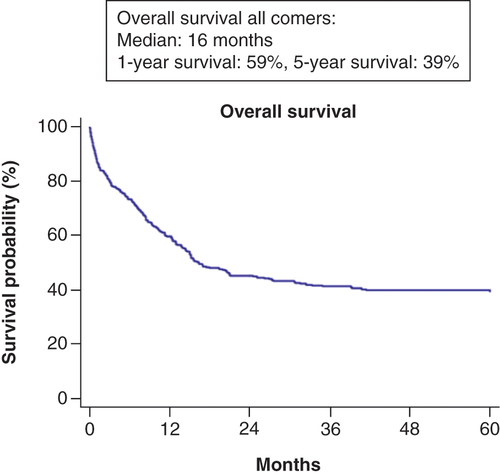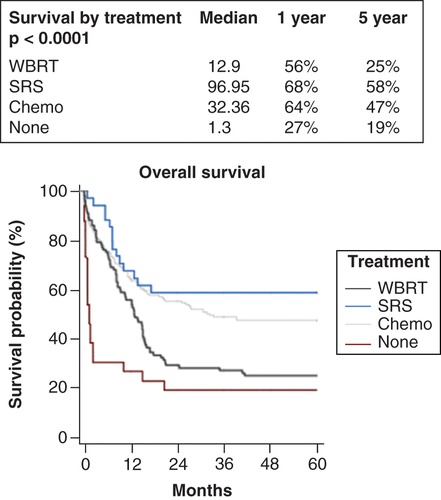Figures & data
Radiotherapy treatments included whole brain radiation therapy and stereotactic radiosurgery.
Mets: Metastases; SRS: Stereotactic radiosurgery; WBRT: Whole brain radiation therapy; XRT: Radiotherapy.

Table 1. Characteristics of patients with primary testicular cancer and brain metastases.
Table 2. Multivariable logistic regression for receipt of stereotactic radiosurgery.
Table 3. Multivariable Cox regression for predictors of survival.
Median survival was 16 months. Survival at 1 and 5 years was 59% and 39%, respectively.

The highest 5-year survival rate was observed in patients receiving SRS (58%), followed by chemotherapy (47%) and WBRT (25%) compared with untreated patients (19%).
Chemo: Chemotherapy; SRS: Stereotactic radiosurgery; WBRT: Whole brain radiation therapy.

